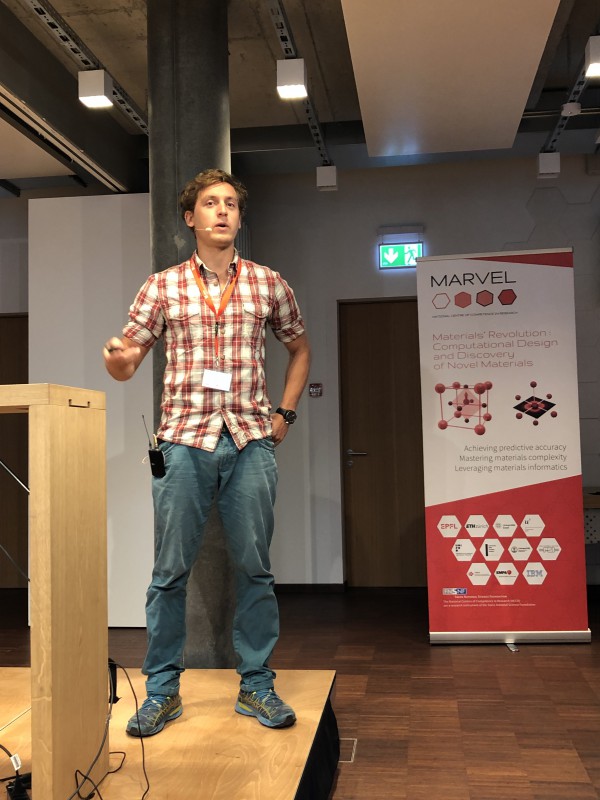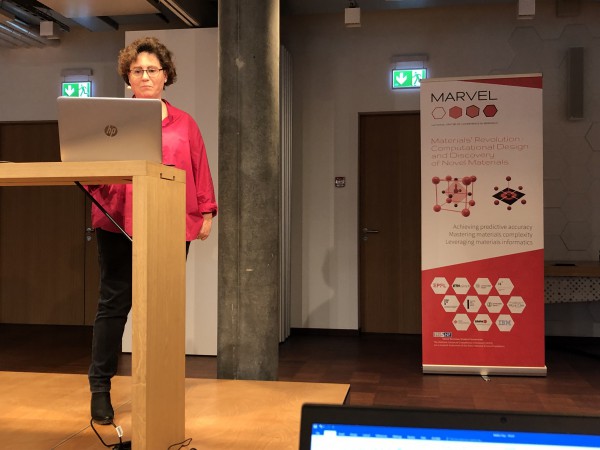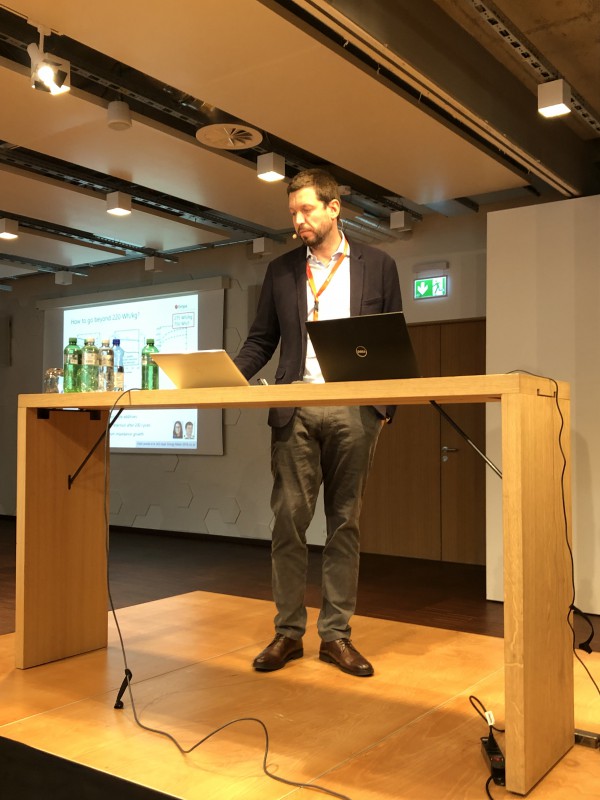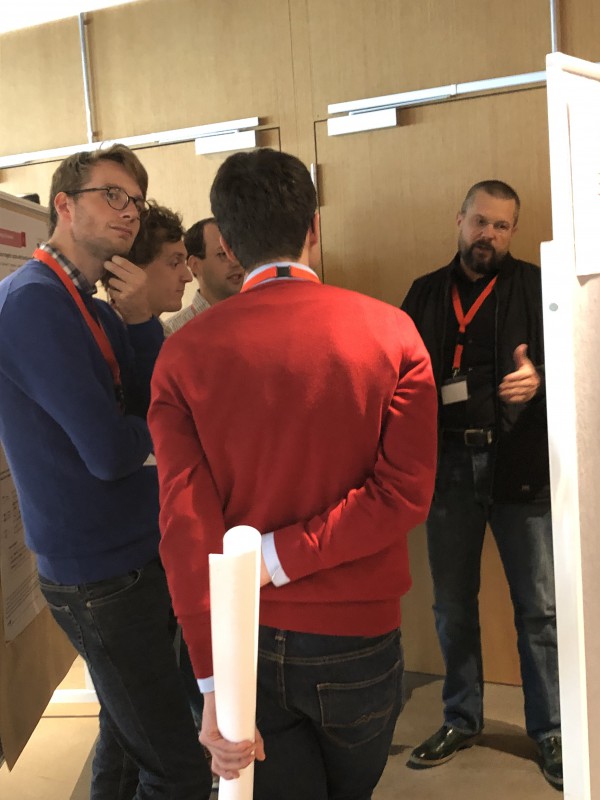MARVEL researchers, partners present work on materials for energy at Materials Science Day
by Carey Sargent, EPFL, NCCR MARVEL
Dr. Pascale Van Landuyt, MARVEL’s industrial liaison and tech transfer officer, started the day with an overview of the NCCR. Giving an explanation of how materials discovery is being revolutionized by a combination of increased computing power, new algorithms, and machine learning, she showed that innovations in all of these domains are accelerating and changing the entire discovery process. Leonid Kahle, a PhD student in the Theory and Simulation of Materials lab of MARVEL director Prof. Nicola Marzari, then presented his work on the search for solid-state lithium-ion conductors.
Lithium batteries play a huge role in today’s society and are used in everything from mobile phones to electric vehicles. They can also store significant amounts of energy from solar and wind power. The problem is that the electrolytes, the material that allows the positive lithium ions to transfer between the anode and the cathode of the battery, are now in liquid form. Though they are highly conductive, they are also flammable and volatile, have low electrochemical stability and subject to the growth of so-called dendrites, needle-like structures that can cause failure or even fire. Solid electrolytes do not suffer from any of these disadvantages. Unfortunately, they’re not very efficient.

Kahle described how he uses computational high-throughput screening in his search for more efficient conductors. Using materials data, he is able to calculate the desired properties, eliminate unsuitable materials and then experiment on remaining candidates to find materials that might work. One candidate has already shown promise during experimental testing at the Paul Scherrer Institute.
Dr. Marisa Medarde, head of the Physical Properties of Materials Group at PSI, presented next, giving an overview of the search for more efficient data storage devices through the use of multiferroic materials.
Communication technologies are expected to account for some 21% of global energy use by 2030 and about a third of that is linked to data storage. More efficient data storage devices could allow for significant reductions in energy demands in comparison to present-day hard drives.
Computer hard drives now store data as magnetic bits that are written through the application of a magnetic field. Magnetoelectric multiferroics, materials characterized by a coupling between their magnetic and electrical properties, should allow us to write magnetic bits by using electric fields, which are much more energy efficient. These devices would produce less waste heat and so have less need for cooling, meaning that the use of fans and air conditioning could also be reduced. The trick is finding one with the best possible properties.

Medarde described the work she and her team have done in this field, including the development of a new multiferroic material that exhibits the necessary magnetic properties even at room temperature, not only when cooled to very low temperatures as is the case with most such materials until now.
The talk of Dr. Corsin Battaglia, head of Empa’s Laboratory for Energy Conversion, focused on materials innovation for next-generation batteries. He discussed a number of projects including the search for lithium batteries with increased storage capacity and reduced content of cobalt, a material already considered a critical raw material due to its important role in the economy and the supply risk linked to the fact that some 50% of the world’s supply is located in the Democratic Republic of Congo. Their main focus here is on nickel-rich cathode materials in combination with novel electrolyte formulations to enable stable long-term cycling. They are also investigating some cobalt-free materials.

Another research focus involves the development of a non-flammable, non-toxic solid electrolyte for all-solid-state batteries based on a novel class of inorganic borate electrolytes. This offers both high ionic conductivity and good electrochemical stability. The research group is also working on non-flammable liquid electrolytes to improve safety and have developed one such aqueous electrolyte for sodium-ion batteries.
Finally, Dr. Hilmi Buqa, Vice President of R&D at Leclanché SA, described the company’s proprietary production method for batteries. Based exclusively on electrodes manufactured in a water-based process, the approach reduces the environmental impact of their production. The company is one of the few manufacturers capable of processing high nickel content cathodes without using organic solvents—the company believes that this element is fundamental to the development of sustainable energy solutions.
The MARVEL morning sessions were complemented by poster sessions and numerous networking activities over lunch and coffee. We expect to hold the fourth edition of the event in October 2020.

Low-volume newsletters, targeted to the scientific and industrial communities.
Subscribe to our newsletter